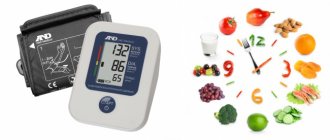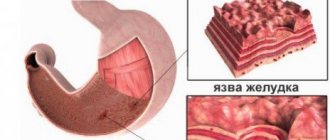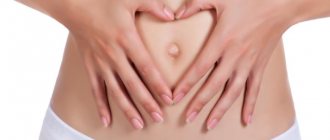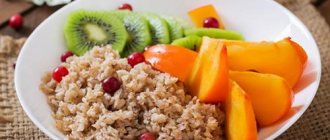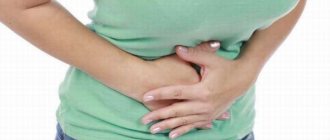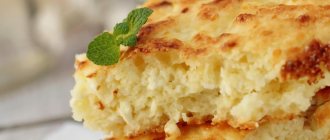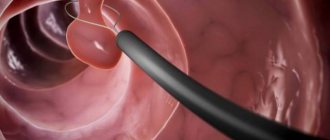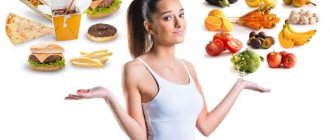Characteristics of diet No. 1
This diet is prescribed to patients suffering from the following pathologies:
- chronic gastritis with increased or preserved secretion;
- ulcer;
- exacerbation of acute gastritis.
This diet for the stomach involves food steamed or boiled in water. Food must be wiped. It is allowed to bake dishes, only without a crust. Meals should be taken at least 4-5 times a day. Cold and very hot foods are prohibited. It is recommended to stick to this diet for 3 to 5 months.
General principles of nutrition
To facilitate the treatment of any disease affecting the digestive tract, it is important that the patient adheres to proper nutrition. The attending physician will help him with this and will create a dietary menu.
A person is allowed to eat food only in liquid form. It also needs to be light. All dishes must be warm. Food that is too hot or cold irritates the mucous membrane.
It is recommended for patients diagnosed with ulcers to take mushy food. Such dishes minimize the mechanical impact on the digestive tract. IN
light foods do not contain fiber, which also has an irritating effect on the walls of the organ.
Creating a menu is not particularly difficult. You can combine permitted foods and liquids, but prohibited foods should be excluded.
Everything should be fresh and clean. Before consuming any food, it is important to make sure that it will not cause harm to your health.
Vegetables are not recommended in their raw form; it is advisable to boil or steam them. It is better to grind everything using a blender or meat grinder. This helps to significantly reduce the load on the stomach during digestion.
Overeating is strictly prohibited . At first, a person may feel slightly hungry, because the body, accustomed to receiving food in large quantities, requires a supplement. This habit needs to be overcome.
Mild malnutrition is better than heaviness and nausea. Reducing the amount of food helps to reduce excess weight, which will also be beneficial.
When treating, it is important not only to choose the right foods, but also to eat them correctly. To do this, nutritionists have developed several simple recommendations that should not be neglected:
- It is advisable to eat every day at certain hours, so the stomach can get used to the established regime.
- Meals are fractional, up to six times a day, in small portions.
- The temperature of cooked dishes should not exceed 70 degrees, but it is undesirable for it to be below 15. This does not make it necessary to keep a thermometer with you all the time, as long as the food is warm.
- The products consumed must be thoroughly crushed.
If these rules are followed, rapid recovery of the digestive system is guaranteed.
https://youtu.be/OdLcK_yVy6Q
Authorized Products
If a patient is prescribed this diet for stomach pain, then his diet should consist of the following foods:
- Bread. White crackers. Wheat bread, definitely yesterday's bread. Galette cookies.
- Dairy products. Mashed freshly prepared cottage cheese. Milk powder, condensed, whole. Cream.
- Meat. Beef, chicken, turkey, veal, rabbit.
- Fish. Carp, pike perch, perch and other low-fat species.
- Cereals. Buckwheat, rice, oatmeal, semolina porridge. Pasta, vermicelli (finely chopped).
- Eggs. Steam omelette. Scrambled eggs. 2 pieces per day are allowed.
- Fats. Butter. Refined oil can be added to cooked food.
- Soup. Cooked from pureed cereals. Vegetable puree soup, milk. It is allowed to add cream, egg, milk.
- Snacks. Mild cheese. Lean and unsalted ham. Salad of boiled fish, meat, vegetables. Dietary, milk, doctor's sausage.
- Vegetables. Carrots, beets, potatoes, cauliflower, zucchini, pumpkin.
- Sweet dishes, berries, fruits. Kissel, mousse, jelly. Sweet ripe fruits, berries in compotes. Jam, sugar, marshmallows, marshmallows.
- Beverages. Rosehip decoction. Tea with cream and milk. Weak cocoa.
Diet
The most important part of the diet is adherence to nutritional culture. To do this you need:
1. Set fixed times for meals.
2. Increase meals and reduce single portions. To prevent stomach diseases, three meals a day are needed; in a diet for chronic diseases, four meals a day are used; six months after an exacerbation, five meals a day; after 3 weeks, six meals a day.
3. Separate drinking chilled liquids or food (milk, juice, drinks, water, ice cream) from eating solid food with plenty of protein and crude carbohydrates with a 2-3 hour break. If you have established stomach diseases, it is better to avoid them altogether. During exacerbations, you should not eat food colder than 15 °C.
4. Avoid hot foods or drinks. The maximum permissible temperature, including cooling in the mouth, is 65 °C.
5. Chew food thoroughly and do not swallow it abruptly. In the diet of patients, crushed food is used, after an exacerbation - grated or even through a sieve.
If you have stomach pain, you can eat:
- porridge, boiled into a semi-liquid state and rubbed through a sieve - semolina, rice, buckwheat, oatmeal. It is better to cook porridge with milk, without adding salt and butter;
- vermicelli, pasta;
- soups – cereal, slimy, with vegetable broth;
- bread - white, yesterday's bread, dried in the oven, or white dry crackers;
- soft-boiled egg or steamed omelette;
- vegetables boiled and crushed to a puree - potatoes, carrots, beets, pumpkin, zucchini, cauliflower;
- boiled meat and low-fat fish - chopped into cutlets, purees and other dishes;
- rosehip decoction and weak tea.
If you have stomach pain, you should absolutely not eat:
- fatty meat and fish;
- spicy, salty dishes, sauces and seasonings;
- breaded fried foods;
- vegetables with an abundance of coarse fiber - white cabbage, radishes, radishes, onions and so on, especially raw;
- eggs hard-boiled or fried to form a rough, burnt crust;
- all animal fats and margarines, except high quality butter (including ghee);
- smoked products and canned food prepared using smoking or frying, that is, everything except dietary ones;
- undried black bread and baked goods;
- alcohol in any form.
Additional dietary recommendations and prohibitions depend on the symptoms accompanying the disease and diagnosis:
1. Watery diarrhea and pain in the stomach and intestines, gurgling in the stomach, vomiting are signs of food poisoning or bacterial infection.
2. Abdominal pain above the navel, nausea, heartburn, belching, diarrhea - gastritis with high acidity.
3. If the pain is accompanied by constant heaviness in the stomach, putrid belching and bad breath, diarrhea or constipation, this is a sign of gastritis with low acidity.
4. When your stomach hurts severely after eating or in the morning on an empty stomach, is accompanied by vomiting, constipation, or there is blood in the discharge, you should immediately consult a doctor. At best, these are symptoms of hemorrhagic or erosive gastritis, but most likely - gastric or duodenal ulcers.
5. If you feel sick, have severe pain in the pancreas (pain in the area just to the left of the stomach, radiates to the back), diarrhea with obvious remains of undigested food in the stool, there is bitterness and a whitish coating in the mouth - you need to call an ambulance. Pancreatitis during an exacerbation is a fatal disease, which also quickly leads to complications.
Forbidden food
This diet for exacerbation of the stomach with prolonged pain syndrome implies many restrictions during the first 7-8 days. In this case, it is recommended to completely avoid bread, snacks, and any vegetables. All food is consumed exclusively in a pureed state.
When dieting, the following should be excluded from the diet:
- broths, decoctions - fish, meat;
- mushrooms;
- smoked meats, pickles, marinades, sauces;
- fatty fish, canned food, meat;
- pies, pastry, brown bread;
- ungrated raw fruits and vegetables;
- kvass, ice cream, black coffee, soda, chocolate;
- radish, white cabbage, turnip, spinach, sorrel, cucumbers, onions.
How to get rid of heaviness in the stomach
The answer to this question depends on the reasons for the discomfort.
Most often, to overcome the unpleasant sensation, it is enough to slightly change your lifestyle:
- Try to eat in moderation without overeating.
- Avoid fatty, spicy or difficult to digest foods. Or at least reduce the amount in your diet and see the effect.
- Eat slowly, chewing your food thoroughly.
- Limit or eliminate alcohol and caffeinated drinks.
- Play sports. Regular physical activity improves the condition of the digestive system.
- Be less nervous, learn to manage stress.
To reduce the heaviness in your stomach right now, some doctors recommend How do I deal with the heaviness in my stomach after having lunch? Drink water with lemon (the juice of one lemon in half a glass of warm liquid) - this may help. Just keep in mind: such home methods can only be used if the discomfort is caused by overeating and your therapist, with whom you have previously consulted, is not against it.
Description of table No. 1a
Useful article? Share the link on VKontakte
This diet is prescribed by a doctor for a period of 6 to 12 days. The duration depends entirely on the patient's condition.
This diet is designed for people who have worsened ulcers or gastritis. In this case, increased stomach acidity is noted.
The diet is considered quite gentle. All dishes are prepared steamed or boiled. Food should be semi-liquid or liquid. It is recommended to eat food up to 6 times a day, taking equal breaks of 2-3 hours.
Diet treatment for inflammation of the pancreas
The prescription of dietary recommendations by a doctor for inflammatory processes in the secretory organ follows the following principles:
- Suppression of enzyme activity and pancreatic juice;
- Reducing pain;
- Reducing body intoxication;
- Reducing the acidity of gastric juice;
- Providing functional rest to the organ;
- Normalization of liver and intestinal function;
- Stimulation of reparative processes of gland tissue;
- Fight against intoxication.
In the acute period of inflammatory changes in the organ with severe pain, high levels of enzymes in the blood, the patient is recommended to fast for 1-2 days, ingest alkaline mineral water of at least 1-1.5 liters, and weak tea at room temperature is allowed.
If, on the doctor’s recommendation, the fasting period needs to be extended for more than two days, patients are transferred to intravenous parenteral nutrition with solutions of amino acids, which are necessary for protein synthesis and maintaining the body’s energy balance.
If the exacerbation is not very pronounced and there is no need to prescribe the patient fasting, the doctor will prescribe the patient a gentle version of table No. 5p.
When inflammatory phenomena subside or in the remission phase, a less gentle, more physiological complete diet is recommended - an expanded version of table No. 5p.
I version of table No. 5p
A pancreatic sparing table is recommended for patients after several days of fasting in severe acute pancreatitis, or from the first days of a not very pronounced exacerbation of a chronic inflammatory process.
The duration of the first version of table No. 5p is up to seven days. This is a low-calorie, mechanically and chemically gentle diet for diseases of the pancreas, or when the stomach hurts.
The total caloric content should not exceed 1800-2000 kcal, the following content is allowed:
- Protein - 80 g
- Fat - 50 g
- Carbohydrates - 230 g
- Table salt - 6 g (in the absence of concomitant heart failure)
Food should be taken 5-6 times a day in small portions. Food should enter the stomach warm; it should not be too cold or hot.
The patient is allowed:
- Slimy cereal soups
- Vegetable puree
- Boiled river fish
- Steamed cutlets, meatballs, quenelles
- Meat soufflé
- Steamed egg white omelette
- Fresh low-fat cottage cheese
- Baked apples
- Grated buckwheat, boiled rice
- Dried fruit compotes
- Jelly
- Biscuits
- White bread
The patient is prohibited from:
- Raw vegetables (especially radishes, cabbage)
- High fiber fruits (legumes)
- Broths
- Coffee
- Sour juices
- Alcohol
- Kvass
- Soda
- Fast food
- Fatty fish and meat
- Spices
- Spices
- Canned food
- Pastries, cakes
- Mushrooms
All products that are difficult to digest and digest in the gastrointestinal tract, have a juice-like effect, contain extractive substances, cause increased gas formation and bloating should be strictly excluded from the diet.
Extended diet table No. 5
When general well-being improves, pain subsides, laboratory parameters normalize, and pancreatic inflammation goes into remission, a less sparing, more physiologically complete diet is prescribed.
It allows culinary processing of food in the oven, steaming. The energy value of the daily diet increases to 2500-2700 kcal, the amount of protein - 11 g, fat - 80 g, carbohydrates - 330 g, table salt - up to 8 g.
Like the previous option, the diet is dominated by proteins that the body needs to build its own cells and damaged tissues, replenish protein “hunger,” and accelerate recovery. Fats and carbohydrates are limited, especially those that are quickly absorbed - sweets, honey, jam.
This type of therapeutic nutrition is prescribed for a long time, and often it must be adhered to throughout life in order to avoid the development of repeated attacks and complications of pancreatitis.
The range of dishes and products allowed for consumption is approximately the same as in the list of acceptable consumption described above, with the difference that patients can also consume in moderate quantities:
- Lean meat not in pureed form, but in pieces
- Low-fat sour cream
- Soft-boiled egg
- Vegetable stew baked in the oven
- Raw mashed sweet apples
- Vegetable (10 g) or butter (8 g) oil, added to ready-made dishes
- Well-cooked porridge with milk
- Stale bread, biscuits
- Jelly
- Hard cheese varieties
What is possible
Diet No. 1a consists of the following products:
- Meat. Steam soufflé or puree is made from veal, beef, and rabbit.
- Cereals. Liquid, milk porridges made from buckwheat, rice flour, oatmeal, semolina.
- Fish. Low-fat varieties in boiled or steamed form.
- Dairy products. Steamed curd soufflé. Cream, milk.
- Eggs. Steam omelette. Scrambled eggs.
- Fats. Butter. Olive, exclusively in its natural form, and well peeled.
- Soups. Mucous decoctions prepared with milk, barley, rice, and oatmeal are useful.
- Vegetables. Only baby food is allowed.
- Sweets, fruits. Honey, sugar, milk jelly. Jelly and mousses are allowed from non-acidic fruits.
- Beverages. A decoction of wheat bran and rose hips. Fresh juice from non-acidic fruits, always diluted with water. Tea with added milk and cream.
What can you eat when your stomach hurts?
If your stomach hurts, the menu should be designed in such a way that the foods consumed are not only sources of all the necessary nutrients, but also do not burden the tract.
All dishes are prepared without oils, spices, sauces and with a minimum amount of salt. Preference should be given to boiled or steamed dishes.
So, what can you eat when your stomach hurts:
- lean dietary meat (skinless chicken, rabbit, turkey, veal);
- fish (pike perch, cod, perch, hake, etc.);
- milk and fermented milk products (ryazhenka, kefir, sour cream, etc.);
- steamed or boiled vegetables (carrots, potatoes, cabbage, tomatoes, cucumbers, etc.);
- boiled eggs;
- soft and hard cheeses;
- cereals and porridges made from them, boiled to a slimy state (buckwheat, semolina, rolled oats, rice);
- wheat bread in the form of crackers, unsweetened biscuits;
- decoctions of herbs, rose hips, compotes, jelly, herbal teas (mint, chamomile), still mineral water.
The diet should be followed for about 2-3 weeks until the condition normalizes. If gastritis has been diagnosed, then such a diet should become the main one.
At the same time, you can make some concessions, gradually including other foods in the diet, observing the body’s reaction.
It is important to add a new product gradually and separately from others. Ultimately, the only foods that should not be included in your diet are those that cause pain.
Features of diet No. 1b
She is appointed after table No. 1a. Having stopped the acute stage of ulcers and gastritis, it is recommended to use this diet. Diet No. 1b is as gentle as possible on the stomach. It allows you to create favorable conditions that promote the healing of ulcers and eliminate inflammation.
The diet includes foods that have been steamed or boiled. According to the diet, all dishes must be consumed by the patient in semi-liquid or puree form. It is important not to forget about the thermal regime. The optimal temperature for served dishes is 40-50 degrees Celsius.
6 meals a day are recommended. The break between meals should not exceed 3 hours.
Causes of a feeling of heaviness in the stomach
Discomfort and a feeling of fullness in the epigastric area occurs when the coordinated functioning of the digestive organs is disrupted. It may be a temporary phenomenon or a signal of diseases of the digestive system. Heaviness appears in isolation or accompanied by symptoms such as belching, heartburn, nausea, and flatulence. The reason for the appearance of unpleasant sensations is often overeating, consumption of low-quality or difficult to digest food, fried, fatty foods, smoked foods, soda, as well as a chaotic diet. The causes of heaviness in the abdomen are:
- gastrointestinal diseases - ulcers, gastritis, pancreatitis, cholecystitis;
- oncological pathologies of the stomach;
- smoking and alcohol abuse;
- pregnancy;
- long-term medication use;
- severe stress;
- functional dyspepsia.
If you experience a regular feeling of heaviness in the stomach after eating, which lasts for more than 3 days, you should definitely consult a gastroenterologist for advice and examination.
Healthy foods
To follow such a diet for stomach pain, it is important to understand what food the diet should consist of. The list of food is slightly expanded than what was recommended when assigning table No. 1a. However, it still contains many restrictions. After all, such a diet is transitional to the main diet (No. 1).
Medical nutrition includes the following products:
- Milk. 4-5 glasses per day are allowed. Cream.
- Soups. Recommended cereals, mucous from semolina, rice, pearl barley. Vegetables are served only pureed. Milk soups with the addition of wheat bran are beneficial.
- Cereals. Mashed, liquid porridge. Dairy products are useful.
- Eggs. Steam omelette. You can have 2-3 soft-boiled eggs.
- Fish, meat. It is recommended to prepare steam cutlets and soufflé from low-fat varieties.
- Fats. Olive oil (added to cooked dishes). Butter (no more than 80 g).
- Kissel. From non-acidic fruits and berries. Lactic.
- Beverages. Non-acidic fruit juices. Weak tea. Carrot juice. Rose hip decoction. Sugar can be consumed no more than 50 g per day.
- Crackers. Only wheat. Daily norm – 100 g.
It is recommended to limit salt intake. Nutritionists advise not to exceed the following norm in your daily diet: 8 g.
Recipes for dishes useful for intestinal pain
There are no particular difficulties in preparing dishes indicated for people with diseases of the gastrointestinal tract. But there are some nuances that you should remember when starting to cook and planning your diet. It is quite possible to take ordinary recipes as a basis. For example, baked apple mousse is prepared as always, but reducing the amount of sugar, or simply doing without it.
https://youtu.be/LbYoMTQkckI
The recipe for steamed cutlets includes several ingredients and is easy to prepare:
- any dietary meat – 500 g;
- rice - 2 tablespoons;
- one medium carrot, finely grated;
- salt;
- parsley dill;
- egg;
- a slice of white stale bread soaked in milk or water.
Meat, rice, carrots, herbs and bread are passed through a meat grinder, preferably twice, and mixed with a raw egg. This way the minced meat will come out tender and the cutlets will be softer. Cutlets or meatballs are formed from the minced meat and cooked in a double boiler. The finished dish must cool down. You can add potato or vegetable puree to the cutlets, but seasoning them with tomato paste or hot sauce is contraindicated.
Eating only cutlets is boring, so you can diversify the table with fish dishes. Skinless white fish fillets can also be easily boiled or steamed. Omelettes and light cottage cheese casseroles, porridges, and pureed soups are suitable. Vegetables for soups are boiled in water, the dish is seasoned with herbs, and spices such as pepper are avoided.
What to exclude
Let's consider what restrictions such a diet imposes on a sick stomach.
Doctors recommend adhering to the following rules:
- Avoid foods with strong juice-containing properties. They cause irritation of the mucous membrane. Broths, fish soup, spices, fried meat, and coffee are excluded.
- You should not overindulge in foods containing a lot of fiber.
- White cabbage, radishes, turnips, sorrel, onions, radishes, spinach, and rutabaga are excluded from medical nutrition.
- Eating sour berries, fruits, and mushrooms is not allowed.
Possible causes of heaviness in the stomach after eating
The causes of this unpleasant symptom vary from completely harmless to complex pathologies. There are two main reasons: the body’s inability to digest food and the inability to move the bolus of food into the intestines.
Poor nutrition is stress for the stomach, which will definitely let you know about it. Poor nutrition includes:
- The habit of snacking on sandwiches - an abundance of dry food causes indigestion.
- Eating a large meal after long periods of fasting means the stomach simply does not have time to adjust. Its walls stretch and lose the ability to contract, push food further to the intestines, and other organs are not able to secrete the required amount of enzymes for digestion.
- The habit of having a large dinner before going to bed - at night all processes slow down, and the food bolus is not digested, causing heaviness, bloating, lack of appetite and nausea by the morning.
- Love of fatty, fried, sour or spicy foods that overly irritate the walls of the stomach. In addition, heavy fatty foods themselves are digested slowly.
- Lack of a diet - when food arrives at the same time, the body prepares in advance for the digestion process. If there is no regime, this is impossible.
- The predominance of foods that cause fermentation in the diet: sweets, beer or kvass.
- Eating stale (especially protein) food leads to putrefactive disorder.
Sometimes the body reacts unconventionally to certain foods, rejecting them. This can happen if the enzymes needed to digest that particular food are not produced. One of the most common forms is lactose intolerance, and with it milk and all dairy products.
Smoking disrupts the blood supply to the stomach, so cravings for nicotine can also cause heaviness in it.
The digestion process is directly related to the nervous system. Overwork slows down all processes; the body cannot find energy for digestion. Prolonged experiences increase the secretion of hydrochloric acid, which negatively affects the general condition of the stomach.
Often, due to anxiety, appetite disappears - a long period of hunger sets in, and eating after it does not always go perfectly. In another situation, due to worries, an uncontrolled appetite may appear - “eating” problems, which leads to overeating. Often, at times of stress, one is drawn to unhealthy foods. All this combined can cause a feeling of heaviness.
Often, when people are worried, they experience pain in the stomach that is not related to digestion.
A feeling of heaviness is one of the first manifestations of gastritis. Inflammation of the walls most often occurs due to bacteria, which begin to multiply rapidly. There can be many reasons:
- taking antibacterial and non-steroidal anti-inflammatory drugs;
- errors in nutrition;
- long-term smoking and alcohol abuse;
- severe or prolonged stress;
- occupational hazards.
Gastritis can also develop due to pathologies of the sphincter - a kind of valve between the stomach and esophagus. When there is a regular release of food from the stomach, saturated with gastric juice into the esophagus, it is irritated, causing discomfort. This is reflux gastritis.
The disease can develop under the influence of internal (for example, genetic) factors. In this case, the inflammatory process is mild, but gastric atrophy develops, which provokes heaviness.
The autoimmune form of gastritis is less commonly diagnosed. This diagnosis implies that the body itself attacks the cells of the gastric mucosa, replacing them with connective tissue. This tissue is unable to secrete the enzymes necessary for digestion. A feeling of heaviness is often accompanied by fermentation.
In addition to the feeling of heaviness, gastritis is often accompanied by the following symptoms:
- heaviness after eating is accompanied by pain;
- Nausea appears after eating;
- discomfort in the mouth;
- the pain is localized in the upper abdomen.
Gastritis can be accompanied by high or low gastric secretion. With high acidity, heartburn occurs. If the disease is not treated, it becomes chronic and difficult to treat.
Deep damage to the walls of the stomach or duodenum is often accompanied by severity. It is associated with impaired gastric emptying. Often a feeling of heaviness and pain appears after eating, so it is impossible to eat in normal portions. The pain may not appear immediately, sometimes after 3-4 hours.
An ulcer can develop for various reasons:
- improper treatment of gastritis;
- disease of other digestive organs;
- injuries;
- myocardial infarction;
- uncontrolled use of medications.
Treatment for peptic ulcers should not be taken lightly. It can turn into a cancerous tumor, and its treatment is much more complicated and does not always have a clearly positive result.
The pyloric region is the place where the stomach passes into the duodenum. Stenosis is a narrowing of this section that prevents food from passing into the intestines. The pathology can be congenital or acquired as a result of a tumor, peptic ulcer or polyps.
Diet principles
Almost every person around the world suffers from stomach pain at some point in their life. The severity of pain may vary depending on the cause of pain in the abdominal area.
There can be many factors that can lead to stomach pain. However, some people experience stomach pain so intense that they may require immediate medical attention.
Some of the causes may be harmless, such as overeating or gas, while others may be a major cause of concern, such as stomach infections.
Most people use medications or simple home remedies to relieve stomach or pancreatic pain.
There are other people who simply ignore such painful feelings and wait until they go away on their own. This causes pain to recur after some time.
In the case when the stomach hurts regularly and the problem becomes common due to eating habits, it becomes necessary to follow a proper diet, that is, a diet.
When your stomach hurts and there are problems with the gastrointestinal tract, you should follow proper nutrition and a special menu, with special attention should be paid to products that are more likely to cause discomfort, diarrhea or constipation (for example, milk).
After this, it is important to create an appropriate nutrition program with a nutritionist that will eliminate problematic foods.
Foods that often initiate intestinal problems include mainly dairy products (milk, sour cream, cottage cheese).
People who are intolerant to lactose (which milk contains) most often have problems digesting these foods.
It is generally accepted that lactose intolerance is a manifestation of a milk allergy. In fact, this is not entirely true, and the difference between these two concepts is quite large.
People with lactose intolerance do not necessarily need to eliminate milk and dairy products from their diet, but they do need to control the amount of dairy products they consume.
People experiencing allergic reactions to milk should not drink even minimal amounts of products containing it.
Signs of a milk allergy include difficulty breathing, a tight throat, nasal discharge, puffy eyes, skin rashes, and vomiting.
Cow's milk allergy is one of the most common allergies in babies. Most often, cow's milk causes the reaction. However, goat's, sheep's and other mammals' milk can also cause allergic reactions.
For those who cannot completely give up dairy products, it is advisable to drink milk with meals or with cereal products.
Taking lactose along with food will make it easier to digest and cause fewer complications.
It is also recommended to drink milk in small portions several times a day with food.
It is also possible to consume milk, cheese and cottage cheese that do not contain lactose or other sources of calcium, for example, soy milk, almonds, green vegetables, fish, etc.
In addition to dairy products, some vegetables such as cabbage, broccoli, beans and onions, citrus fruit foods, refined sugar and flour products can cause additional stomach problems.
Spicy foods and processed foods can also cause symptoms of upset stomach or irritable bowel syndrome.
At the same time, symptoms can be controlled by improving diet and nutrition.
You need to drink enough fluids in the form of water and fresh fruit juices to avoid dehydration and also improve the digestion process.
It will also help get rid of the bad odor coming from your mouth by removing the bacteria that grows in it.
You should not drink milk, it will only worsen the symptoms. You should also eat several small meals a day instead of two large ones.
Because small meals are easier to digest than large meals or heavy meals, they can help reduce abdominal pain and the frequency of diarrhea.
As a general rule, it is recommended to eat food slowly and take time to chew it properly.
This should not be done just to enjoy the taste of food, but also because the process of chewing promotes digestion and activates the movement of saliva in the mouth, killing bacteria that produce bad breath.
Foods rich in fiber and fiber normalize digestion and help regulate bowel movements, thus reducing the likelihood of constipation and, as a result, abdominal and stomach discomfort, as well as bad breath.
In this regard, the diet also involves increasing fiber intake and eating more fresh fruits and vegetables.
However, you should not overdo it, as sometimes a diet that includes high fiber intake can also cause problems.
Apart from this, doing certain exercises is helpful in treating abdominal cramps and intestinal upset.
You can start with light exercise and regular walks and gradually increase the amount of exercise as your endurance increases.
Diet for the treatment of pancreatic disease
The secretory organ can become inflamed with the development of acute or chronic pancreatitis - this is one of the most common lesions, which has a different origin and can occur during a viral infection or with systematic alcoholization of the body.
A provoking factor in the occurrence of inflammation is an error in nutrition: abuse of too fatty, spicy, smoked foods, and alcoholic beverages.
When a gland disease has already occurred, it is important to understand that if you stick to the same diet before, the organ will simply stop working and serious consequences will occur in the body, including death.
Therefore, following a diet should become a habit and be strictly followed by all persons with such problems. Proper nutrition and diet for a sick stomach and pain in the pancreas is as necessary as air for life!
The basic principle of treating inflammatory processes in this organ is the following: “Cold, hunger and rest.” These methods were relevant many centuries ago, and they do not lose their significance to this day.
A patient with acute pancreatitis should be provided with complete rest and bed rest, apply cold to the diseased organ, and fast for several days.
In chronic forms outside of exacerbation, the tactics of therapeutic nutrition are not so strict and have their own characteristics that all patients must know. Violation of the diet, taking prohibited foods threatens the patient with exacerbation.
Recommended Products
Dietary fiber is extremely important in maintaining normal stomach health and is a preventive measure in preventing peptic ulcers.
Fresh fruits and vegetables provide ample fiber and are also an excellent source of important vitamins, minerals, and antioxidants that can potentially help the body protect and maintain a healthy stomach.
Fruits and vegetables that have flavonoids and other compounds such as coumarins, alkaloids, terpenoids, tannins and phenolic acids are believed by doctors to have medicinal and functional properties in addition to being low in calories.
Strawberries contain substances called polyphenols that help heal stomach ulcers.
The diet should include consumption of foods that are rich in flavonoids, antioxidants and other phytochemicals. They consist of:
- strawberries;
- apples;
- celery;
- cranberries;
- Luke;
- garlic;
- green tea.
As medicine continues to evolve, laboratory research has uncovered substances in black soybeans that may be helpful in fighting inflammation associated with stomach infections and the bacteria H. Pylori.
Therefore, you can include some types of soy and legumes in your diet (eat them in small portions), because such a diet will only benefit any person.
While milk is considered an undesirable food because it increases stomach acidity, some types of yogurt can actually be quite beneficial for stomach ulcers.
Evidence from animal studies suggests that yogurt contains probiotics and lactobacilli that may help heal stomach ulcers.
Nutrition at different acidity levels
Depending on the course of the pathological process, the doctor may recommend that the patient adhere to one of the standard diets.
The recommendations of each of them are in addition to the general requirements. This is a kind of adjustment of the food list depending on the state of the body.
Increased acidity
Therapeutic diet is used to eliminate ulcers, gastritis and poisoning caused by food or bacteria. It is also needed if there has been damage to the gastrointestinal tract of chemical or mechanical origin. The main task of such nutrition is to eliminate any irritants that negatively affect the organ.
- dairy dishes;
- cottage cheese and cheese;
- sweet juices;
- mineral still water;
- strong tea;
- non-acidic peeled fruits;
- boiled liver;
- sturgeon caviar.
- porridge;
- bread made from rye and bran;
- marinades and preserves;
- various broths;
- vegetables, fruits and drinks with high acidity.
Salt, fatty foods, sour cream and eggs are also prohibited. If there is a large loss of electrolytes, it is allowed to consume fermented milk products and pickled foods.
Low acidity diet
This diet helps to gently stimulate gastric secretion.
- butter;
- soft fermented milk products;
- lean fish and meat, baked or stewed;
- ripe fruits;
- vegetables, cooked in the oven or boiled.
- natural milk;
- legumes;
- chocolate;
- figs;
- raw vegetables.
The consumption of salt, permitted fats, grapes and kvass is also kept to a minimum. After the pain disappears, canned food is gradually introduced, which helps to increase acidity.
Unwanted Products
As a general rule, you should avoid foods that are high in fat, highly acidic, or that can, in rare cases, cause a heart attack. Diet and proper nutrition do not imply eating any dishes containing these products.
Coffee, both decaffeinated and decaffeinated, is an acidic drink that can irritate the stomach lining. Carbonated drinks are sour in nature and therefore should also be avoided.
Foods high in saturated fat, such as fatty red meats, foods prepared with heavy cream, or baked goods, can generally contribute to inflammation.
Trans fats have an even more negative effect on the gastric mucosa.
Citrus fruits such as lemons, oranges, grapefruits, tangerines and limes have higher levels of acidity compared to other fruits.
To reduce the risk of irritation, you can eliminate some of the following types of fruit from your diet.
Spicy foods and spicy foods can also be excluded from the diet if you have pain in the stomach and pancreas.
There is no evidence yet that this will help cure ulcers, but if symptoms are relieved, this is already a sufficient reason for such dietary adjustments.
Chocolate, black pepper and mint are also often on lists of unhealthy foods, however, people have different tolerances for these foods.
Alcohol is prohibited during a diet for stomach and pancreatic pain as it stimulates acid secretion and excessive drinking will certainly be counterproductive.
Very modest consumption of alcohol will not aggravate the peptic ulcer too much, however, you need to consult your doctor further about this.
According to various studies, smoking cigarettes increases the chances of getting a stomach ulcer. It also slows down the healing process and can worsen stomach conditions.
The presence of a stomach ulcer does not mean that a person can only eat light, low-fat foods.
Luckily, there are several low-fat alternatives that are popular with many people and included in their diet.
These include:
- Lean meat (for example, poultry).
- Fish (if it's canned, make sure it's packed in water instead of oil).
- Some legumes (you can eat them depending on the tolerance of these products to a particular person).
Instead of drinking carbonated drinks or coffee, you can drink:
- most fruit juices, excluding citrus fruits;
- clean water;
- light teas.
Following a proper diet and healthy eating for pain in the stomach and pancreas may require additional material costs, as well as devoting some time to planning and drawing up the diet itself.
However, dieting for pain in the stomach or intestines (and sometimes in the pancreas area), and switching to a healthier diet in general, can significantly reduce the symptoms of stomach pain and relieve other serious health problems.
How to eat for different diseases?
When your stomach hurts, one of three diets is prescribed:
- For people with damage to the stomach or duodenum of an erosive, mechanical and ulcerative nature, as well as inflammation due to increased and normal acidity.
- Nutrition for patients with low stomach acidity.
- For the treatment of pancreatitis, cholecystitis, liver and gallbladder diseases.
The recommendations given for each of the diets complement the general ones, showing what can and should be eaten to cure or reduce symptoms, and what kind of food will cause an exacerbation of the disease.
1. Diet for high stomach acidity.
Used in the treatment of ulcers, food and bacterial poisoning, gastritis of all types, except anacid and hypoacid, as well as as a gentle nutrition for any mechanical or chemical damage to the gastrointestinal tract. Its purpose is to ensure the absence of mechanical and chemical irritants for the mucous membrane. Recommended to eat:
- milk-based dishes, boiled milk, slightly acidic fermented milk products, cottage cheese, cheese - natural antacids. Except in cases of bacterial poisoning and lactose intolerance (for milk);
- butter, refined vegetable oil (olive oil is best);
- non-sour fruit and vegetable juices, jelly, strong tea, still mineral water;
- sweet fruits without peel;
- boiled liver;
- sturgeon caviar (in reasonable quantities).
The presence of symptoms such as: 1. bitterness in the mouth, putrid odor; 2. frequent gastrointestinal disorders, alternating constipation with diarrhea; 3. fatigue, general lethargy; indicate intoxication of the body by parasites. Treatment must begin now, as helminths that live in the digestive tract or respiratory system.
Excluded from the diet:
- porridges and dishes made from corn, millet, barley and legumes;
- rye and bran bread in any condition;
- pickled, fermented foods and drinks, mushrooms;
- mushroom, meat, fish broths and dishes based on them;
- highly acidic drinks, sour fruits, vegetables, vinegar;
- sparkling water, kvass, coffee without milk, chocolate.
Avoid salt and fatty recommended foods - eggs, sour cream. If you feel sick from excess acid, you can drink mint tea outside the period of exacerbation. If there is a significant loss of electrolytes due to vomiting and diarrhea after food poisoning (without increased acidity), the patient is temporarily not subject to restrictions on pickles, marinades and fermented milk products.
2. Nutrition with low stomach acidity.
Prescribed to correct digestion in patients with anacid or hypoacid gastritis. It is designed to gently stimulate the secretion of the gastric glands in combination with the absence of strong mechanical irritants. Recommended to use:
- all soft fermented milk dishes, kumiss;
- vegetable oils, butter;
- tender meat or fish, fried without breading, stewed, baked;
- low-fat meat and fish broths and dishes based on them;
- ripe soft fruits without rough skin or seeds;
- mashed, baked, boiled vegetables;
- vegetable, fruit, berry juices, coffee, cocoa, tea with lemon, carbonated mineral water (in consultation with your doctor).
Preventing the feeling of heaviness in the stomach after eating
Preventative measures are not just a way to avoid unpleasant sensations. This is an opportunity to prevent the development of serious diseases that have many other symptoms and unpleasant consequences.
The first and easiest way of prevention is proper nutrition. It includes:
- Minimizing or completely avoiding fatty, fried, sour, canned and spicy foods.
- Do not consume scalding hot food or drinks. This irritates the mucous membrane, which can cause inflammation.
- Do not combine cold drinks with sweet or fatty foods. In this case, fatty foods are digested even worse.
- Avoid carbonated drinks, which can cause bloating and heaviness.
- Avoid alcohol and nicotine - they irritate the walls of the mucous membrane and negatively affect the blood supply to the stomach. In addition, such bad habits create additional stress on the liver.
- Eat regularly, preferably at the same time in small portions.
- Do not have dinner immediately before bed. Don't eat too much at dinner.
- Do not take a horizontal position after eating. Then food from the stomach is directed in the opposite direction, creating pressure on the valve between the stomach and esophagus. This pressure leads to reflux gastritis.
- Do not go on long periods of fasting followed by a hearty lunch.
- Make sure you don’t uncontrollably eat stress, especially tasty but unhealthy foods - it’s better to drink soothing tea.
- Don't eat in front of the TV - focusing on what's happening behind the screen makes it easy to eat more than you need.
You should also adhere to the following recommendations:
- It is very important to set aside enough time to eat. The habit of eating lunch on the go or in a hurry leads to the fact that a person does not chew food thoroughly enough, and the body, being in a tense state, is not able to digest it normally.
- Good digestion is impossible without enough water. Throughout the day, you need to monitor your drinking regime and additionally 15-20 minutes before meals you need to drink at least a glass of warm water, you can add lemon juice for taste. Lunch must include a liquid dish and a sufficient amount of juicy vegetables.
- Stomach diseases are often associated with bacteria. Therefore, it is very important to wash all foods thoroughly and avoid eating foods that are of questionable freshness. The same applies to various delicacies, especially seafood or offal. You should not dine in cafes or restaurants where unsanitary conditions are obvious.
- The health of the nervous system plays a big role, so you should avoid unnecessary worries if possible. If life is constantly associated with stress, it may be worth reconsidering something in it, learning to react differently to problems or taking medications for the health of the nervous system.
- A good habit is to drink a glass of kefir or other fermented milk drink 15 minutes before meals. This will not only relieve the feeling of heaviness, but also supply the body with necessary microelements and bifidobacteria. In addition, this habit will help you avoid overeating at lunch.
- Moderate exercise improves all metabolic processes, including digestion. Therefore, gymnastics, swimming and dancing are excellent prevention of heaviness in the stomach, but if it has already appeared, this will not help.
Heaviness in the stomach after eating can be the result of dietary errors, bad habits or serious pathologies. If this unpleasant symptom recurs, the cause must be identified and treated. Preventive measures will help avoid discomfort and the diseases that cause them.
